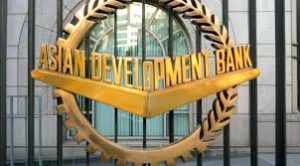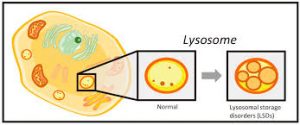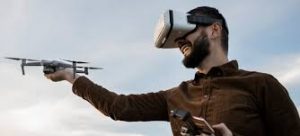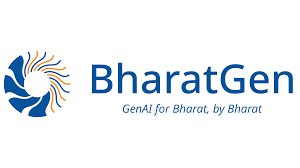Today’s Current Affairs: 3rd June 2025 for UPSC IAS exams, State PSC exams, SSC CGL, State SSC, RRB, Railways, Banking Exam & IBPS, etc
Table of Contents
National Centre for Disease Informatics and Research:

Public Primary Health Centres (PHCs) are better prepared for diabetes and hypertension care than Sub-Centres, Community Health Centres (CHCs), and Sub-District Hospitals, a study undertaken by the National Centre for Disease Informatics and Research (ICMR-NCDIR), Bengaluru, has found.
- It is a permanent institute of the Indian Council of Medical Research (ICMR), an autonomous organization under the Department of Health Research, Ministry of Health & Family Welfare, Government of India.
- Location: Bengaluru, Karnataka
- It is one of its kind of unique institutions which utilizes information science for health research as its integral component.
- The main broad and overall objective of the centre is to sustain and develop a national research database on cancer, diabetes, cardiovascular Diseases (CVD), and stroke through recent advances in electronic information technology with a national collaborative network so as to undertake aetiological, epidemiological, clinical, and control research in these areas.
- The centre closely works with the Ministry of Health, Government of India, and other Central/State Government or other agencies to provide or plan to provide baseline information and technically help in designing, monitoring, and evaluating control programmes and activities.
- The centre encourages and extends technical support to all Central/Regional/State medical institutions and medical colleges, non-governmental or private centres for constituting and establishing data collection (on cancer, CVD, diabetes, and stroke) in their institutions along internationally acceptable and nationally adaptable formats and standards. Use of the internet and electronic information networking will be a regular feature.
- The centre plan, innovates and integrates recent advances in communications and electronic information technology to develop the emerging field of health/disease informatics and develop software modules for data capture, checking, and analysis.
Asian Development Bank : New Initiative

The Asian Development Bank (ADB) President recently announced a five-year initiative to transform urban infrastructure across India, with an estimated investment of $10 billion.
- Asian Development Bank (ADB) is a multilateral development bank established on 19th December 1966.
- It is the principal international development finance institution for the Asia-Pacific region.
- It envisions a prosperous, inclusive, resilient, and sustainable Asia and the Pacific, while sustaining its efforts to eradicate extreme poverty in the region.
- Headquarters: Manila, Philippines.
- Membership in the ADB is open to members and associate members of the United Nations Economic Commission for Asia and the Far East.
- It’s also open to other regional countries and non-regional developed countries that are members of the U.N. or of any of its specialized agencies.
Lysosomal Storage Disorders:

Children diagnosed with Lysosomal Storage Disorders (LSDs), are left without essential medical care.
- Lysosomal Storage Disorders (LSDs) are rare genetic conditions that cause a buildup of toxic materials in your body’s cells.
- Examples include Gaucher, Pompe, Fabry, MPS I, MPS II, mucopolysaccharidoses, mucolipidoses, oligosaccharidoses, etc.
- The majority of the LSDs are caused by mutations in the genes encoding a lysosomal enzyme.
- A lysosome is a membrane-bound cell organelle that contains digestive enzymes.
- Lysosomes are involved with various cell processes.
- They break down excess or worn-out cell parts
- People with LSDs lack certain enzymes or a substance that helps the enzyme work (enzyme activator or modifier). Enzymes assist your cells’ lysosomes with metabolism.
- Without functioning enzymes, your body can’t break down fats, sugars and other substances.
- If those build up in your body, they can be harmful. They cause dysfunction of those organs where they accumulate and contribute to great morbidity and mortality.
- All LSDs except Hunter syndrome (MPS II) and Fabry disease are autosomal recessive This means both parents must carry the abnormal gene that prevents the body from making an enzyme with normal activity.
- LSDs usually appear during pregnancy or soon after birth.
- More rarely, adults may develop
- People usually have more severe cases when an LSD starts early and more mild cases when an LSD starts later.
- There are no cures for lysosomal storage diseases.
- But treatments can help you to manage your symptoms and lessen damage to organs and tissues.
MERCOSUR Grouping:

The Prime Minister recently told the visiting Paraguay President that India and Paraguay can work together to further expand the Preferential Trade Agreement with the trading bloc MERCOSUR.
- The Southern Common Market (MERCOSUR for its Spanish initials) is a South American regional economic organization.
- It was created in 1991 by signing the Treaty of Asunción.
- Objective is facilitating the free movement of goods, services, capital, and people among the member countries.
- It originally comprised Argentina, Brazil, Paraguay and Uruguay as its members.
- Bolivia and Venezuela joined it later. (Venezuela has been suspended since December 1, 2016).
- Mercosur also counts Chile, Colombia, Ecuador, Guyana, Peru, and Suriname as associate members.
- Headquarters: Montevideo, Uruguay.
- Its official working languages are Spanish and Portuguese.
- The bloc’s highest decision-making body, the Common Market Council, provides a high-level forum for coordinating foreign and economic policy.
- The group consists of the foreign and economic ministers of each member state, or their equivalent, and decisions are made by consensus.
- The group’s presidency rotates every six months among its full members.
- It is the fourth largest integrated market after the European Union (EU), North American Free Trade Agreement (NAFTA), and ASEAN.
- India and MERCOSUR signed a Preferential Trade Agreement (PTA) in 2004.
First-Person View Drones:

Ukraine used First-person view drones to attack Russia and destroyed more than 40 planes.
- First-Person View Drones are unmanned aerial vehicles enhanced with artificial intelligence to perform advanced tasks with greater precision and autonomy.
- By processing real-time video data through AI algorithms, FPV drones are able to avoid obstacles, and carry out mission-specific operations such as surveillance and search and rescue.
- First-person view (FPV) means that a person piloting a drone can see what the drone sees, through a camera attached to its body.
- The live video can be seen through specialised goggles, or on smartphones and other kinds of screens, and the drone can be manoeuvred remotely.
- Before FPV drones are deployed, a reconnaissance drone with a larger range first goes to survey the area and zero in on a specific region that needs to be targeted.
- FPV drones have a much smaller range, of a few kilometres.
- It Operates without relying on satellite-based GPS, enhancing resilience against jamming or signal loss.
- Utilises advanced visual-inertial navigation, interpreting camera data to determine position and movement.
- LiDAR technology complements the SmartPilot system, boosting precision in complex or cluttered environments.
- The key advantages are cost and deep strike capabilities while remaining largely undetected.
- One major challenge is that the drones’ movement through their surroundings cannot be seen by the drone operator.
- This can limit situational awareness and may lead to disorientation. At times, another person, a visual observer, may be needed to guide the person controlling the drone.
- Such drones are also used in filming and other non-defence purposes.
BharatGen:

The Union Minister launched Bharat Gen Multimodal LLM at BharatGen Summit.
- BharatGen is India’s first-of-its-kind, indigenously developed, Artificial Intelligence (AI) based, government-funded, Multimodal Large Language Model (LLM) for Indian languages.
- It is developed under the National Mission on Interdisciplinary Cyber-Physical Systems (NM-ICPS) and implemented through TIH Foundation for IoT and IoE at IIT Bombay.
- BharatGen aims to revolutionize AI development across India’s linguistic and cultural spectrum.
- The initiative is supported by the Department of Science and Technology (DST) and brings together a robust consortium of leading academic institutions, experts, and innovators.
- The platform integrates text, speech and image modalities, offering seamless AI solutions in 22 Indian languages.
- This initiative will empower critical sectors such as healthcare, education, agriculture, and governance, delivering region-specific AI solutions that understand and serve every Indian.
- The BharatGen initiative is being executed through a network of 25 Technology Innovation Hubs (TIHs), four of which have been upgraded to Technology Translational Research Parks (TTRPs).
- The Mission’s four pillars include technology development, entrepreneurship, human resource development, and international collaboration.
Guidelines for the Scheme to Promote Manufacturing of Electric Passenger Cars in India:

The Ministry of Heavy Industries (MHI) has issued comprehensive guidelines for the Scheme to Promote Manufacturing of Electric Passenger Cars in India (SPMEPCI).
- Companies can import up to 8,000 fully built electric cars per year at a reduced 15% customs duty (for five years), provided each vehicle’s CIF value is at least USD 35,000.
- To qualify, applicants must invest at least ₹4,150 crore within 3 years, set up manufacturing units, and start local production.
- The scheme mandates a Domestic Value Addition (DVA) of 25% within 3 years and 50% within 5 years.
- A bank guarantee matching the duty foregone or ₹4,150 crore, whichever is higher, must be submitted and will be refunded upon fulfilling the investment and DVA conditions.
- The duty concession cap is ₹6,484 crore or the actual investment—whichever is lower.
- Land cost is excluded, but charging infrastructure expenses are allowed up to 5% of investment.
- Only companies with a minimum global automotive revenue of ₹10,000 crore and fixed assets worth ₹3,000 crore are eligible.
Electric Passenger Vehicle Manufacturing Scheme:
- A central government scheme to incentivize domestic and global EV manufacturers to establish EV car production capabilities in India by offering tax benefits and investment-linked incentives.
- Launched In: March 2024, officially notified in June 2025.
- Nodal Ministry: Ministry of Heavy Industries (MHI)
- Implementation Agency: Project Management Agency (PMA)
Seva Se Seekhen Campaign:
Youth volunteers will begin their 15-day engagement at Jan Aushadhi Kendras under the Government of India’s Seva Se Seekhen campaign.A youth engagement and hands-on learning campaign designed to involve young citizens in public service environments like Jan Aushadhi Kendras (JAKs). Introduced in 2025, as part of India’s National Youth Development Framework.
Nodal Ministries: Ministry of Youth Affairs and Sports ,Department of Pharmaceuticals, Ministry of Chemicals and Fertilizers
Operation Spider’s Web:
Ukraine executed Operation Spider’s Web, its largest drone offensive, destroying $7 billion worth of Russian aircraft.Operation Spider’s Web is a high-precision, long-range drone operation launched by Ukraine targeting Russian airbases deep within enemy territory.
India Green Economy Potential:
A recent NLB Services report forecasts that India will generate 7.29 million green jobs by FY28 and 35 million by 2047.A green economy refers to economic activities that reduce environmental risks, improve ecological sustainability, and generate employment through low-carbon, resource-efficient, and inclusive growth. India is expected to generate 7.29 million green jobs by FY 2027–28. The total number of green jobs could reach 35 million by 2047.
Neurodegenerative Diseases:
Recent research by National Centre for Biological Sciences (NCBS-TIFR) and other studies has revealed that neurodegenerative diseases may start long before symptoms appear, driven by blood vessel dysfunction and abnormal protein activity in the brain. This new understanding moves the focus from direct neuron damage to early vascular and molecular changes, paving the way for earlier diagnosis and prevention.Neurodegenerative Diseases are a group of disorders in which the brain and nerve cells (neurons) gradually break down or die over time. This leads to problems with memory, movement, speech, and other important body functions. These diseases usually get worse over time and currently have no complete cure, though treatments can help manage symptoms.




